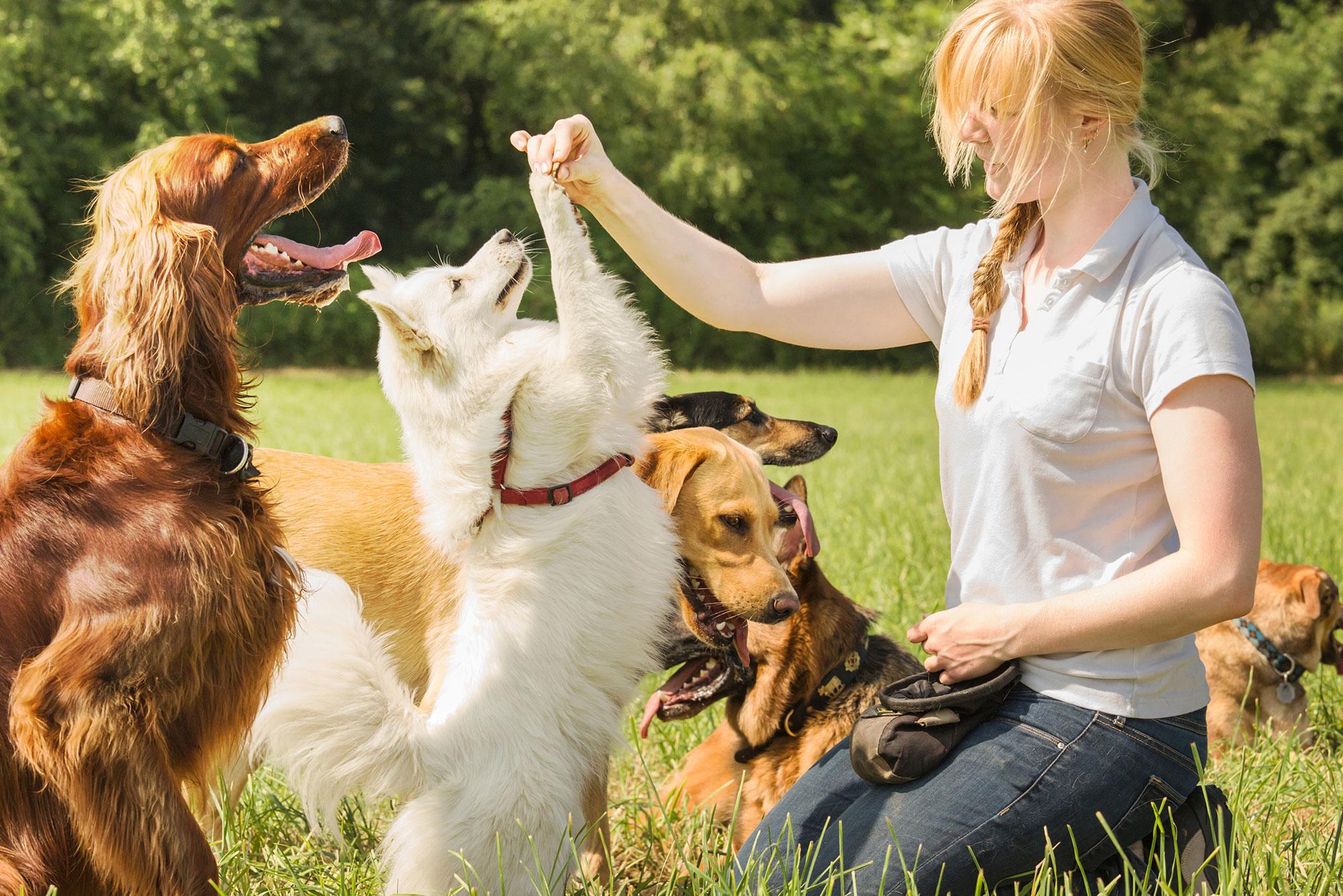Master Essential Commands: Effective Pet Training Made Easy
Effective pet dog training is an essential facet of accountable pet dog ownership, and understanding important commands serves as the foundation for an unified partnership between handler and dog. Comprehending the nuances of canine actions and the training process is crucial; nevertheless, the journey to a trained pet frequently presents unanticipated difficulties that need focus.
Understanding Your Canine's Habits
To grasp the subtleties of effective pet dog training, it is important to damage down and analyze your pet's actions. Dog training. Comprehending the motivations behind your pet dog's actions is important; habits can come from impulse, anxiety, excitement, or a wish for interest. By observing your canine in various scenarios, you can identify patterns that might suggest underlying emotions or demands
For instance, a pet that barks excessively may be sharing dullness, anxiousness, or a demand for social communication. Conversely, a pet that displays devastating behaviors could be looking for excitement or relief from stress. Recognizing these triggers enables you to customize your training approach successfully.
Furthermore, it is crucial to consider the pet dog's breed features, as they can affect actions significantly. Some breeds are inclined to certain qualities, such as herding or safeguarding impulses, which can influence their responses to certain stimuli.
Lastly, consistency in your feedbacks to your pet dog's habits fosters a much better understanding between you and your family pet. This common comprehension is fundamental for developing trust fund and facilitating an efficient training process that supports both behavior modification and positive support.
Important Commands to Teach
Showing important commands is a basic facet of reliable pet dog training, supplying the foundation for a mannerly and responsive family pet. These commands not only boost communication in between the proprietor and the canine however additionally make sure safety and security in numerous settings.
The most critical commands include "Sit," which encourages your pet dog to stay stationary and calm; "Keep," which strengthens the concept of remaining in one place up until released; and "Come," which is essential for recalling your pet dog from potentially unsafe scenarios. "Down" shows canines to rest, promoting relaxation and control, while "Leave it" aids prevent pets from getting hazardous or undesirable products.
" Heel" is an additional important command that motivates your canine to stroll carefully close to you, improving chain manners. Lastly, "No" works as a vital boundary-setting command, assisting to fix undesirable actions.
Training Methods for Success
Reliable canine training counts heavily on utilizing a selection of methods that provide to both the pet's learning style and the owner's training objectives. One vital approach declares support, which includes gratifying wanted habits with deals with, praise, or play. This technique urges the dog to repeat those habits, cultivating a solid bond in between proprietor and family pet.

Another effective technique is clicker training, where an unique noise, made by a clicker, marks the precise moment a canine performs a wanted activity. This precise timing assists canines associate find this the actions with the benefit, enhancing their understanding.
Uniformity is vital in all training methods. Establishing clear commands and maintaining the same cues assists the pet dog grasp expectations a lot more rapidly. Furthermore, brief, interesting training sessions avoid monotony and increase retention.
Including socializing opportunities is also vital. Exposing canines to different settings, individuals, and other animals assists them develop confidence and flexibility.
Last but not least, persistence plays a significant function in effective training - Dog training. Each pet dog discovers at their very own pace, and recognizing this can cause a much more enjoyable training experience for both the proprietor and the pet. Applying these strategies will certainly establish the foundation for effective dog training
Common Obstacles and Solutions
Despite the ideal training strategies, pet owners typically come across common obstacles that can impede progression. One prevalent problem is disparity in commands and cues. When relative make use of various commands for the exact same actions, it confuses the pet, bring about irregular reactions. The option hinges on establishing a unified strategy among all household members, making certain that every person makes use of the exact same terms and signals.

In addition, some pets may show stubbornness or absence motivation. This can typically be resolved by including positive support strategies, such as treats or praise, to encourage desired actions. Tailoring rewards to what your pet dog locates most motivating can considerably improve their engagement.
Last but not least, concern or anxiety can hamper progress in training. Acknowledging indications of stress and anxiety and changing the training rate appropriately is crucial. Employing steady exposure to been afraid stimulations can assist build confidence over time, promoting a more efficient training experience.
Keeping Consistency and Patience
Consistency and persistence are vital in pet dog training, as they develop the Continued structure for achieving lasting behavioral changes. Dogs grow on regular and clear assumptions; thus, keeping a regular method in commands, incentives, and adjustments is essential. When instructors use the same signs and signals reliably, canines are better able to understand what is being asked of them. Inconsistency can result in complication and disappointment, threatening the training process.
Pets, much like humans, have differing learning rates and may not realize commands instantly. Positive reinforcement plays a crucial duty right here, satisfying preferred behaviors and assisting to cultivate a trusting partnership between the pet dog and trainer.
Verdict
Understanding vital commands is essential to reliable canine training, cultivating boosted interaction and reinforcing favorable habits (Dog training). Eventually, a well-trained pet not only displays excellent habits however additionally creates self-confidence, contributing to a harmonious relationship in between the canine and its owner.